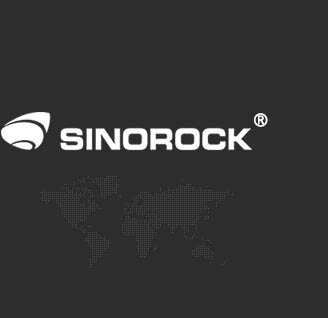Self-Drilling Anchor Bars in Foundation Support: Applications and Benefits
Time:2025-09-24From:sinorock View:
Self-drilling anchor bars have become a cornerstone in modern foundation support, particularly in deep foundation projects. Their unique design and versatility make them an ideal solution for stabilizing foundation sites, ensuring safety, and optimizing construction efficiency. This article explores the primary applications and advantages of self-drilling anchor bars in foundation support, highlighting their superiority over traditional methods.
Self-Drilling Anchor Bars in Foundation Support
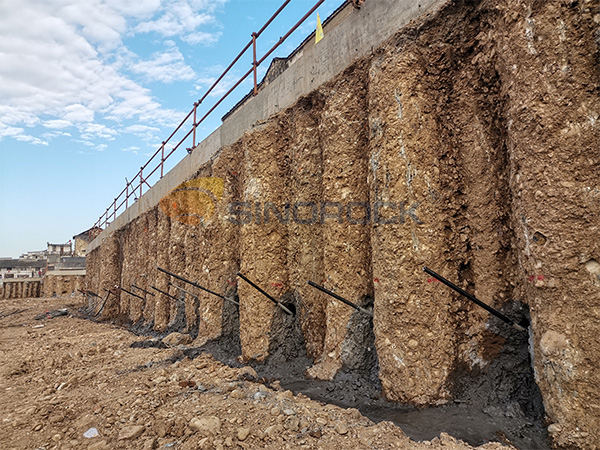
Self-drilling anchor bars serve as a proactive support mechanism in foundation projects, reinforcing pit sidewalls to prevent collapse and excessive deformation. They ensure the safety of the foundation site and its surrounding environment.
|
Application Scenarios |
Function |
| Deep excavation in urban areas (with important structures nearby) | Control deformation and protect the surrounding environment as a key component of the pile-anchor system. |
|
Weak soil foundation pits (such as coastal soft soils, river alluvial deposits) |
Provide stable anchoring force, overcome borehole formation challenges, and prevent support structure failure. |
|
Irregularly shaped or space-constrained excavation pits |
Flexible construction adapts to various angles and spatial requirements. |
|
Emergency reinforcement or emergency engineering |
Rapid construction to swiftly stabilize the emergency projects. |
Below are their key applications:
1. Providing Proactive Support
By applying pre-stress to self-drilling anchor bars, they actively constrain soil or rock deformation in the foundation sidewall. These transfers sliding forces from potential failure planes to deeper, more stable strata, significantly enhancing the overall stability of the foundation slope.
2. Controlling Deformation
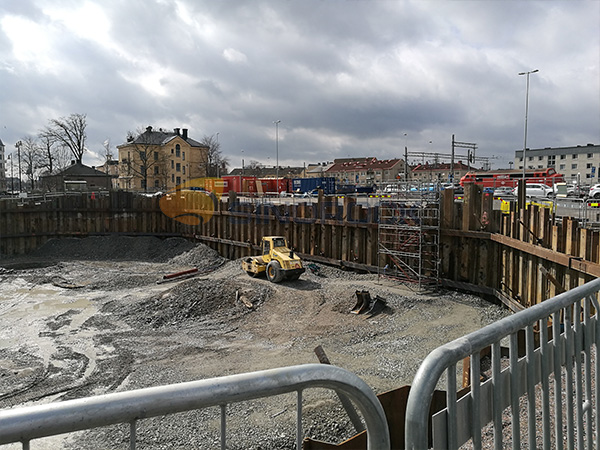
In urban areas with dense infrastructure, controlling deformation—such as horizontal displacement and ground settlement—is critical to protecting adjacent buildings, underground utilities, and roads. Self-drilling anchor bars deliver immediate support, effectively minimizing deformation and ensuring project safety.
3. Forming Composite Support Systems
Self-drilling anchor bars are often integrated with other support structures to create robust composite systems:
• With Piles or Diaphragm Walls: Used as rock bolts or soil nails in pile-anchor systems, they provide elastic support points, reducing bending moments and displacement in piles, enabling deeper foundations.
• With Soil Nail Walls: In challenging geological conditions (e.g., high groundwater or loose sandy soil), self-drilling anchor bars replace traditional soil nails, offering higher load-bearing capacity.
4. Adapting to Confined Construction Spaces
The compact equipment required for self-drilling anchor bars allows their use in spatially constrained foundation projects, making them highly adaptable to complex environments.
Advantages of Self-Drilling Anchor Bars Over Traditional Methods
Self-drilling anchor bars offer distinct advantages, particularly in challenging geological conditions, making them a preferred choice in foundation support.
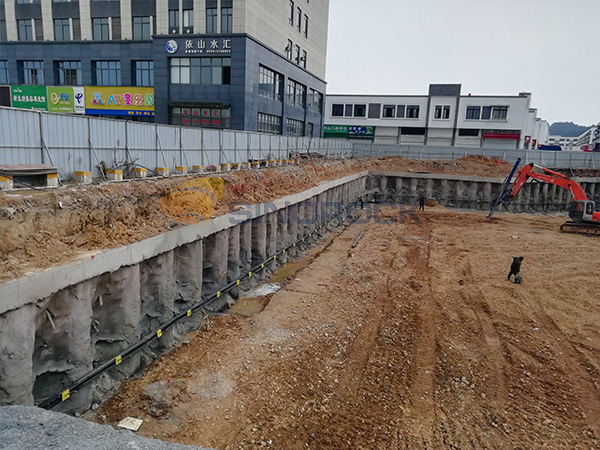
1. Overcoming Challenges in Sandy or Silty Soils
• Traditional Challenge: In water-rich sandy or silty layers, conventional drilling often leads to borehole collapse or necking, complicating rock bolt installation and compromising grouting quality.
• Self-Drilling Solution: The drilling and rock bolt installation occur simultaneously, eliminating collapse risks. Immediate pressure grouting through the hollow bar ensures effective penetration and consolidation of weak soils, forming an enlarged anchorage segment for reliable load-bearing capacity.
2. Addressing Difficulties in Pebble or Backfill Layers
• Traditional Challenge: Pebble layers or backfilled rubble pose significant drilling challenges, often causing deviation or equipment jamming.
• Self-Drilling Solution: Equipped with alloy drill bits, self-drilling anchor bars efficiently penetrate such layers, ensuring seamless drilling and anchor installation in a single operation.
3. Adapting to Complex and Variable Strata
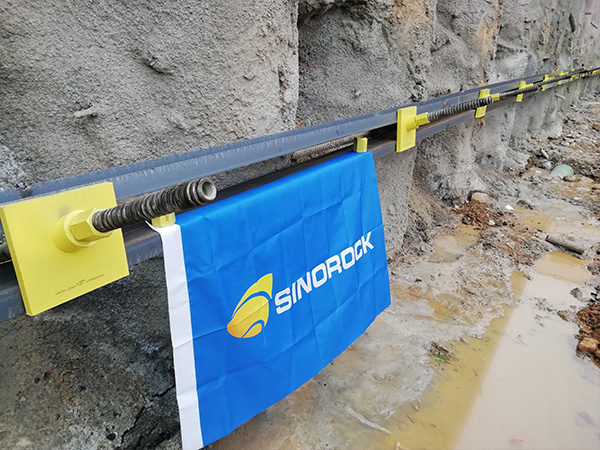
Foundation sites often feature heterogeneous strata, such as soft upper layers and hard lower layers. Self-drilling anchor bars adapt seamlessly to these variations without requiring process changes, ensuring continuous and efficient construction.
4. Faster Construction
The streamlined "drill-and-install" process of self-drilling anchor bars aligns perfectly with the "layered foundation, layered support" principle. This allows rapid support for excavated surfaces, reducing exposure time, accelerating project timelines, and minimizing risks and costs.
5. Enhanced Reliability and Safety
• Stronger Bonding: The thread surface of self-drilling anchor bars enhances bonding with cement grout, improving anchorage strength.
• Consistent Grouting: Full-length pressure grouting ensures dense and uniform grout, guaranteeing high-quality anchorage.
• Higher Pre-Stress Capacity: These rock bolts support higher pre-stress levels, providing more proactive and rigid support for foundation stability.
Conclusion
Self-drilling anchor bars ability to tackle challenging geological conditions, streamline construction processes, and enhance safety makes them indispensable in modern foundation engineering. By integrating seamlessly with other support systems and adapting to diverse site conditions, self-drilling anchor bars ensure safer, faster, and more cost-effective foundation projects.
latest news
-
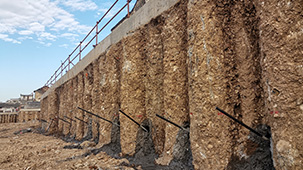
- Self-Drilling Anchor Bars in Foundation Support: Applications and Benefits
- Time:2025-09-24From:This Site
- Self-drilling anchor bars in proactive support, deformation control, and composite support systems, as well as their significant advantages over traditional anchors in challenging strata like sandy or pebble layers.
- View details
-
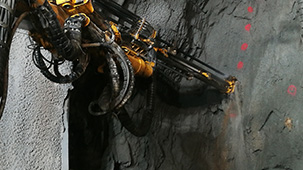
- Self-Drilling Anchor Bolts for Preventing Tunnel Collapses in Soft Ground
- Time:2025-09-23From:This Site
- Self-drilling anchor Bolts prevent tunnel collapses in soft ground. Learn SDA bolts applications, working principles, construction methods, and advantages over traditional support for enhanced safety and cost-efficiency.
- View details
-

- The Working Principle and Advantages of Self-Drilling Rock Bolts
- Time:2025-09-18From:This Site
- Discover the working principle of self-drilling rock bolts, explore their advantages and applications. Learn SDA bolts how streamline drilling, grouting, and anchoring for efficient ground stabilization in tunneling, mining, and slope projects.
- View details
-
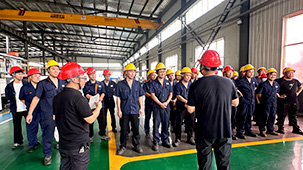
- Sinorock 2025 Quality Month | Strengthening Quality Foundations, Empowering Product Excellence
- Time:2025-08-13From:This Site
- Sinorock’s 2025 Quality Month, themed “Strengthening Quality Foundations, Empowering Product Excellence,” successfully concluded, reinforcing our commitment to superior product quality.
- View details
-
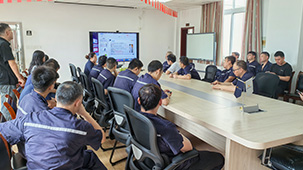
- Sinorock Safety Month 2025 | Everyone Speaks Safety, Everyone Can Respond
- Time:2025-07-03From:This Site
- Sinorock Safety Month 2025, centered on the theme "Everyone Speaks Safety, Everyone Can Respond - Spot Workplace Hazards," has wrapped up successfully!
- View details
-
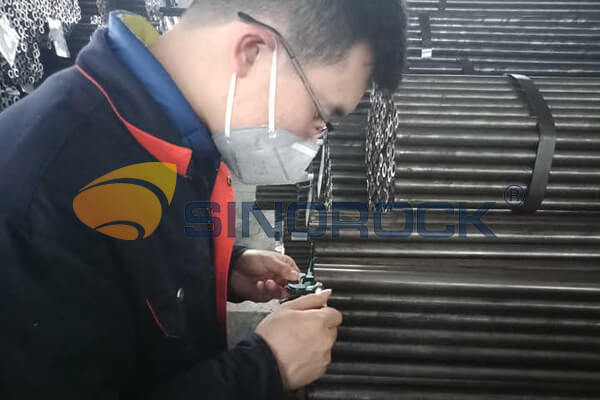
- Quality Control: the Vital Factor of A SDA Bolt Factory
- Time:2025-01-09From:This Site
- Sinorock’s comprehensive quality control system, from supplier management to outgoing inspections, ensuring the highest standards for self-drilling anchor bolts in construction.
- View details
-

- SINOROCK to Showcase Innovative Mining Solutions at Mining and Metals Central Asia 2025
- Time:2025-09-09From:This Site
- We are pleased to share that SINOROCK will participate in the Mining and Metals Central Asia 2025, taking place from September 17 to 19 at the Atakent International Exhibition Centre in Almaty, Kazakhstan. You can find us at Booth 11-231.
- View details
-
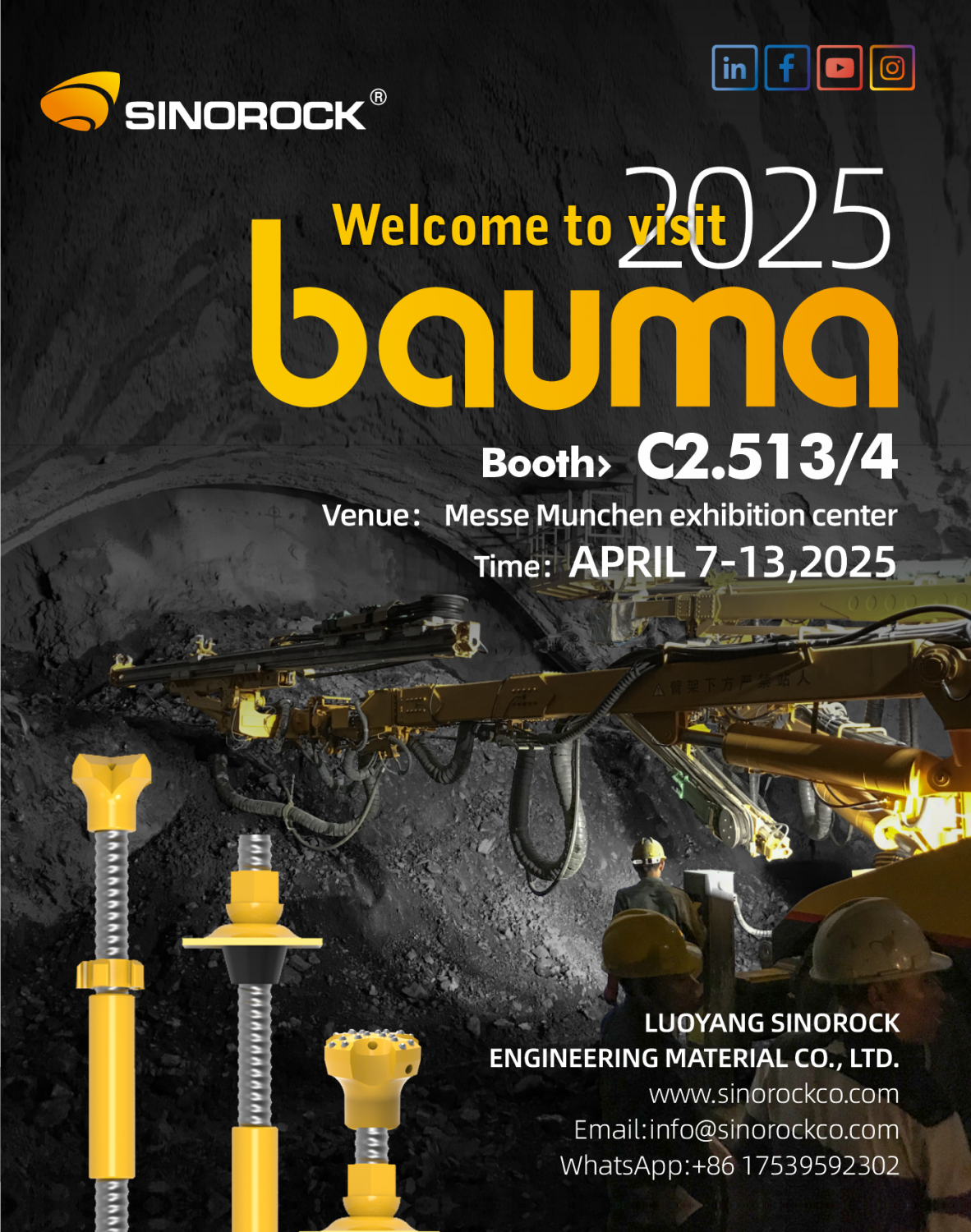
- Sinorock Invites You to Explore Proven Self-Drilling Anchor Bolt Solutions at bauma 2025
- Time:2025-03-07From:This Site
- From April 7–13, 2025, explore Sinorock’s Self-drilling anchor bolt solution at Booth C2.513/4 in Hall C2 of the Messe München Exhibition Center (Munich, Germany).
- View details
-
.jpg)
- SINOROCK to Attend EXPOMINA PERÚ 2024 in Lima, Peru
- Time:2024-08-10From:This Site
- Sinorock to Attend EXPOMINA PERÚ 2024 in Lima, Peru
- View details
 Download
Download 

